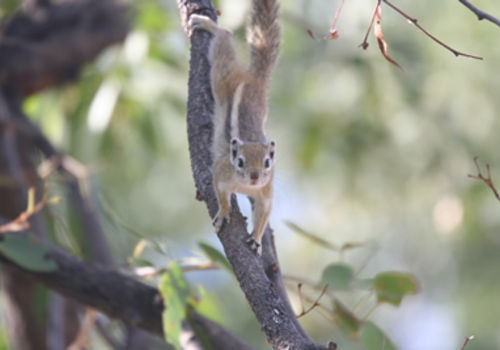
Striped tree squirrel
Funisciurus congicusStriped tree squirrel
Introduction: As its name suggests, the striped-tree squirrel (Funisciurus congicus) is mainly arboreal, although it spends almost as much time foraging on the ground as it does in trees. They are the smallest of Namibia's squirrel species. They are active in the early mornings and are great sun baskers, returning well before sunset to their dreys, which are either holes in trees or trees lined with leaves and grass. This indicates a sensitivity to the cold as they use the dreys during the warmer summer months and the holes in the trees in the colder winter months. They live in small family family parties of about four.
A feature of the striped-tree squirrel is that they mob potential predators by vocalizing loudly in unison with aggravated tail flicking. They also whistle loudly at the approach of birds of prey and because of their small size and agility can move around the smallest of twigs using them as escape routes. They are agile jumpers and move freely from tree to tree, another escape strategy, especially when in the radar of snakes.
Distribution: The striped-tree squirrel habits woodland areas, typically found in the north-western parts of Namibia to east of Grootfontein.
Diet: Striped-tree squirrels are predominantly vegetarians, with seeds and fruits of the mopane a favourite, however, they have been observed eating insects.
Colouring: The colour of the upper parts of the body between the white stripes are a dark buffy-yellow, darker on the mid-back and lighter on the head, which is a tinged rusty colour.
Breeding: The average litter is 2 juveniles and are born in tree holes or in dreys.
Size: Adults are some 30cm in total length with a mass of about 110g. The tail is slightly longer than the length of the head and the body.
Klein Windhoek

